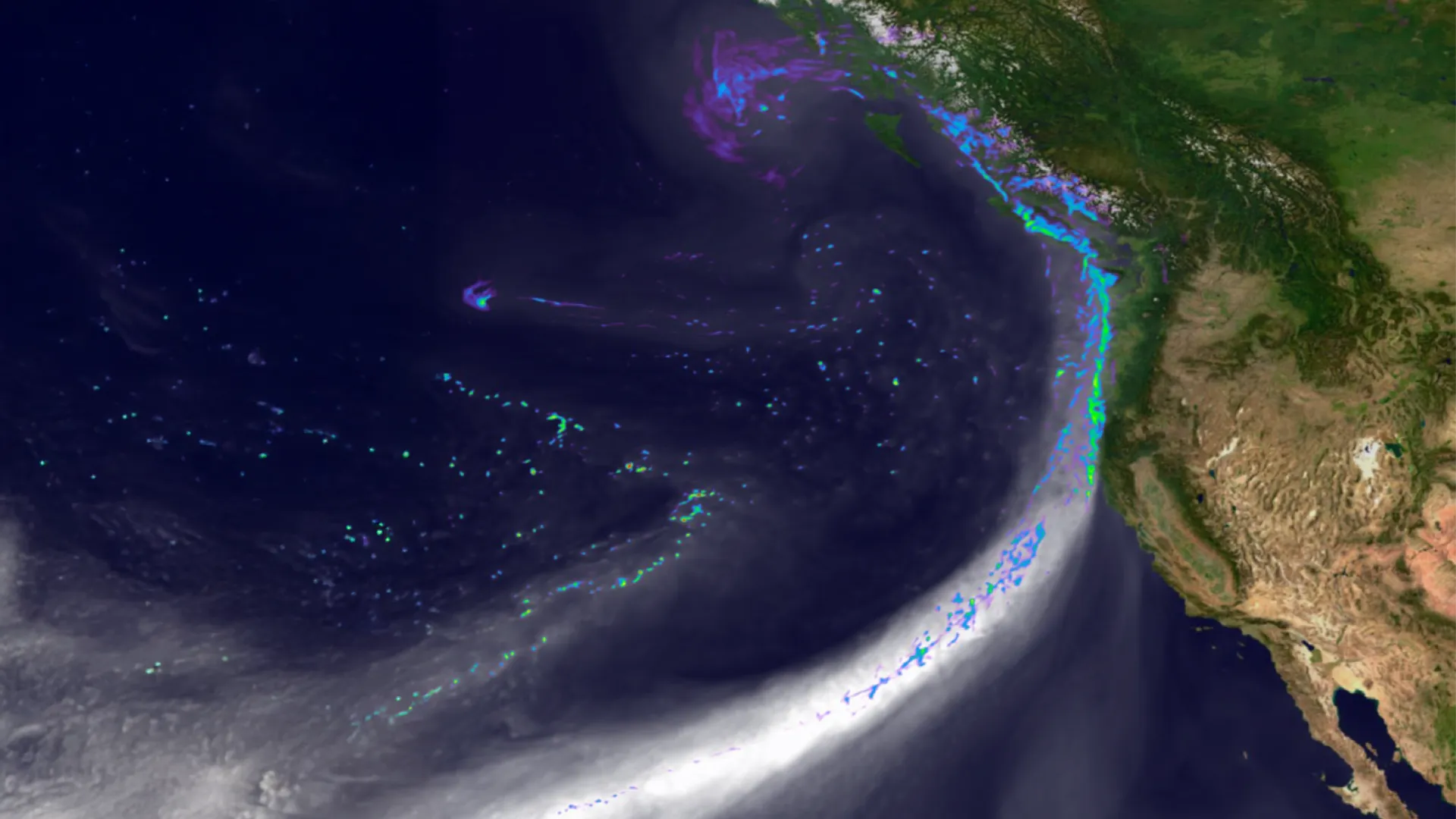
Atmospheric rivers, notorious for being a primary cause of flooding along the West Coast of the United States, also play a crucial role in delivering essential moisture to the region. However, the size of these storms does not necessarily correlate with their flood risk, as various ground factors significantly influence outcomes. A recent study sheds light on these driving factors, offering insights to aid communities and water managers in their preparedness efforts.
The study, published on June 4 in the Journal of Hydrometeorology, examined over 43,000 atmospheric river events across 122 watersheds from 1980 to 2023. The research revealed that one of the key contributors to flooding is the condition of the soils prior to a storm. When soil is already saturated, flood peaks are observed to be 2-4.5 times greater on average. This finding elucidates why certain atmospheric river storms result in severe flooding, while others of similar intensity do not. It indicates that even less powerful storms can lead to significant floods if they encounter already-soaked soils, while stronger storms may provide vital moisture to dry landscapes without triggering flooding.
Mariana Webb, the lead author of the study and a Ph.D. candidate at the Desert Research Institute (DRI) and the University of Nevada, Reno, emphasizes that the flooding potential is influenced not just by storm intensity, but also by conditions on the land surface. She notes that there’s a critical threshold of soil moisture; once it exceeds this level, the likelihood of considerable flooding increases significantly.
The analysis also identified the specific environmental conditions under which soil moisture has the strongest impact on flooding. In arid regions like California and southwestern Oregon, floods are more prevalent when storms strike during periods of saturated ground. The watershed soil composition in these areas—usually shallow and clay-rich—leads to limited water storage capacity, making them more susceptible to flooding. In contrast, regions with lush vegetation, such as Washington and the Sierra Nevada, typically feature deeper soils and a robust snowpack that enhances water retention, thus diminishing the significance of soil saturation in flood prediction.
Webb points out that enhanced soil moisture information is particularly valuable for managing flood risks in arid climates, where variability in soil moisture due to evaporation creates a more unstable environment. Although soil moisture is currently monitored at various weather stations, including the USDA’s SNOTEL Network, the data is less comprehensive compared to that of rainfall measurements. Due to significant variations in soil moisture within watersheds, multiple monitoring stations are often required to achieve an accurate understanding vital for flood predictions.
With the growing frequency and intensity of atmospheric rivers, increasing soil moisture monitoring in identified high-risk watersheds could significantly bolster early warning systems and improve flood management strategies. By customizing flood risk assessments in accordance with the unique physical attributes and climatic conditions of different watersheds, this research contributes to more accurate flood predictions. It underscores the necessity of integrating land surface conditions with meteorological assessments to gauge the impacts of atmospheric rivers, bridging the gap between atmospheric sciences and hydrology.
The study was a collaboration between Webb and DRI ecohydrologist Christine Albano, who has significant experience in researching the risks of atmospheric rivers and their repercussions on the landscape. Albano stated that Webb’s work quantifies the saturation levels that lead to increased flood risks across the West Coast, emphasizing the importance of combining forecasting data with soil moisture understanding to enhance flood warning systems.
Reference:
- Mariana J. Webb, Christine M. Albano, Adrian A. Harpold, Daniel M. Wagner, Anna M. Wilson. Wet Antecedent Soil Moisture Increases Atmospheric River Streamflow Magnitudes Nonlinearly. Journal of Hydrometeorology, 2025; 26 (6): 741 DOI: 10.1175/JHM-D-24-0078.1






